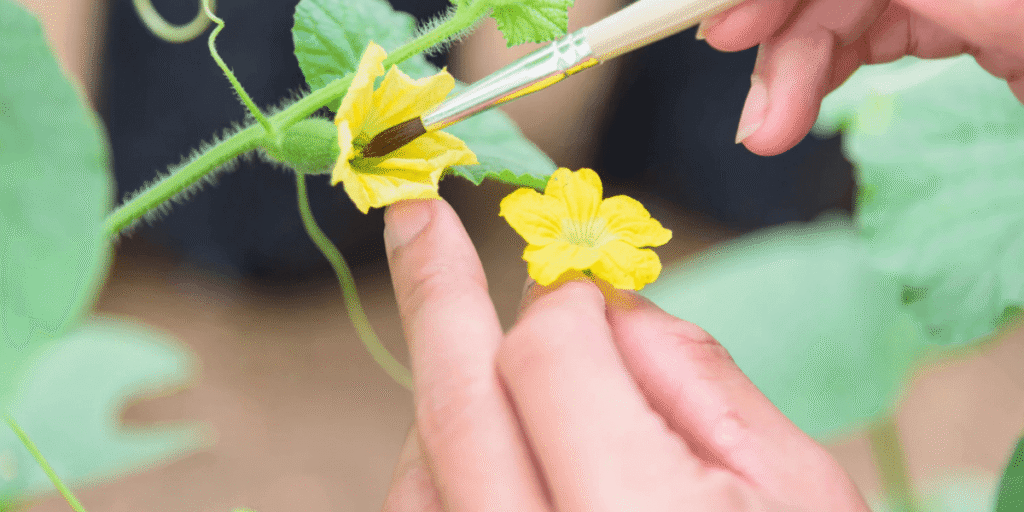Common Hydroponic Issues are something every grower will run into at some point. Hydroponics is an amazing way to grow plants because it offers faster growth and bigger yields, but it is not always a smooth ride. Whether you’re just starting out or have been growing for a while, challenges are bound to pop up. The key is knowing how to spot issues early and having a solid plan for fixing them.
This guide is like your go-to troubleshooting manual, covering the most common problems hydroponic gardeners face. It will help you keep your garden healthy and your yields high. With a little guidance and some proactive steps, you’ll be back on track in no time!
Common Hydroponic Issues with Nutrient Problems
Plants can be surprisingly picky when it comes to food. If you give them too much, their roots and leaves can get scorched and look unhealthy. If you give them too little, they’ll become weak, grow slowly, and never reach their full potential. Finding that sweet spot makes all the difference between weak, sad plants and strong, vibrant ones.
The easiest way to keep things in balance is by using a TDS or EC meter. It’s like a nutrition tester for your water, letting you know whether your nutrient mix is too strong or too weak. If the numbers are too high, you can always add some fresh water to dilute it. If the numbers are too low, your plants are probably hungry, and a little extra nutrient mix will get them back on track. Once you get into the habit of checking, it’s way easier,no more guessing! You’ll notice your plants looking healthier and growing stronger with every check.
pH Imbalance as a Common Hydroponic Issue
Plants can be surprisingly picky about the pH of their nutrient solution. Even if the nutrients are in the water, they won’t be able to take them up if the pH is too high or too low. It’s like having a pantry full of food, but the doors are locked, everything’s there, but they just can’t get to it.
Most hydroponic plants do best when the pH is between 5.5 and 6.5. Outside of that range, some nutrients become unavailable. For example, if the water is too alkaline, iron and manganese get “locked out,” and you’ll see the leaves start to yellow. If the pH is too acidic, calcium and magnesium become harder for the plants to use, and growth can slow down.
The good news? Keeping your pH in check is pretty straightforward. Get into the habit of testing it regularly. A reliable pH meter or test kit will tell you exactly where your solution stands. If it’s off, you can easily adjust it with a bit of pH Up or pH Down to get it back into the ideal range.
I really recommend using something like the Greenfuturehydro pH tester. It takes the guesswork out of it and gives you peace of mind knowing your plants are getting what they need. Once you make this part of your routine, you’ll notice your plants looking healthier, growing faster, and just generally looking a lot happier. Trust me, it makes a big difference!
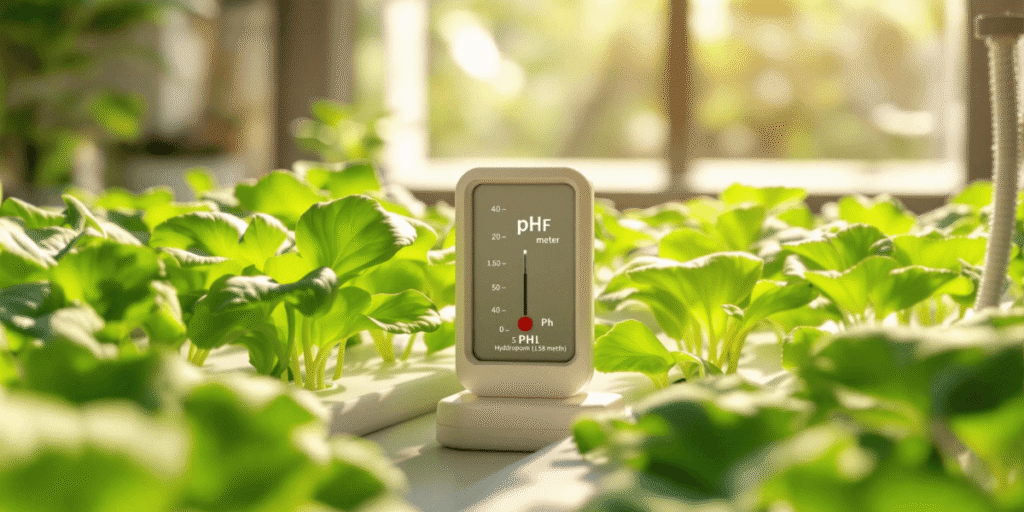
Root Rot and Poor Root Health in Hydroponic Systems
Healthy hydroponic roots should be white and firm. That’s a good sign your plants are thriving. If you notice your roots turning brown, slimy, or even giving off a funky smell, that usually means root rot has set in. This often happens when there’s not enough oxygen in the water. Roots can also get tangled or blocked, making it harder for the plants to take in nutrients properly.
The best way to keep your roots happy is by ensuring the water stays well oxygenated. A good air pump with an air stone does a great job of keeping bubbles moving and helps with root health. If your roots start to get tangled, don’t stress. Just trim them gently. It’ll encourage new growth and keep the root system strong.
Once you get into the routine of checking your roots and keeping the water oxygenated, your plants will look healthier, grow faster, and you’ll feel a lot less stressed about managing your hydroponic system. It’s a small effort but totally worth it for that thriving garden.
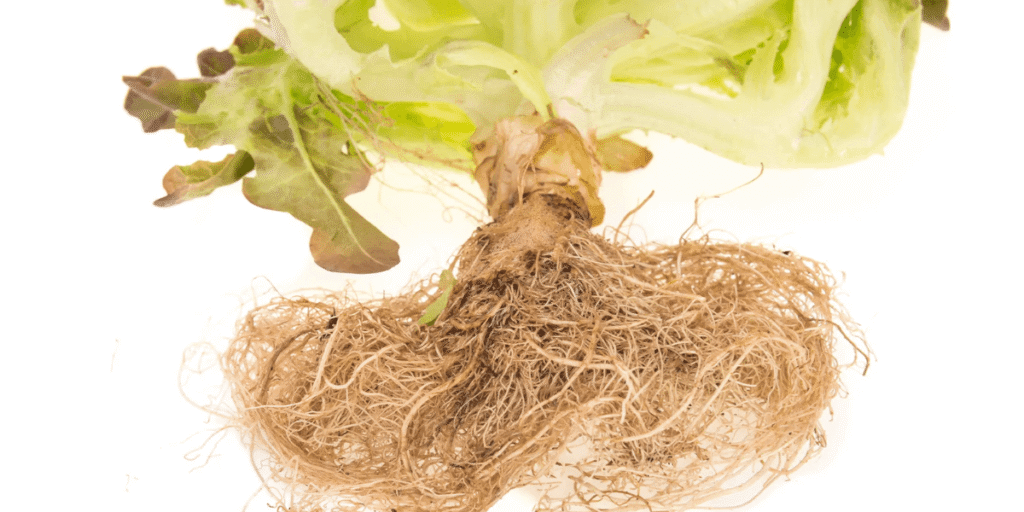
Algae Growth Problems in Hydroponics
Algae is like that uninvited guest that shows up when everything’s just right in your hydroponic setup. It loves the same things your plants do light, water, and nutrients. At first, you might just notice a faint green film on your reservoir or along the tubes. If you leave it, though, it’ll spread fast. Before long, it starts competing with your plants for food and oxygen, and that can really slow down growth. It can even affect the taste and quality of your edible greens.
The good news is controlling algae isn’t that hard. Since algae needs light to grow, one of the easiest ways to stop it is by covering your reservoir, tubes, and pipes with opaque materials. Keeping them sealed off from sunlight works wonders. Also, a regular cleaning routine even just a quick rinse can stop algae from building up before it gets out of hand.
Another tip is to keep an eye on water temperature and circulation. Stagnant, warm water is like a perfect breeding ground for algae. By making these checks and cleanings a regular part of your routine, your plants get all the nutrients and oxygen they need, and your system runs smoothly. Plus, you’ll spend way less time worrying about green invaders. Before you know it, it’ll be second nature, and your hydroponic garden will thrive without interruptions.
For more tips on preventing algae growth, check out our article on How to Prevent Algae Growth in Hydroponic Systems.

Water Temperature Stress as a Common Hydroponic Issue
Keeping the temperature of your nutrient solution in check is super important for healthy plants. If the water gets too warm, it can’t hold enough oxygen, and that makes the roots more prone to rot. Plus, warm water is like a spa for pathogens and algae, and trust me, your plants don’t want that.
The trick is to keep the water temperature between 65 and 75 degrees Fahrenheit, or 18 to 24 degrees Celsius. It’s easier than it sounds. You can insulate your reservoir to prevent it from heating up too quickly, and if your grow room gets hot, a small water chiller can do wonders. It might seem like a small detail, but managing water temperature can make a huge difference in how healthy and fast your plants grow. Once it becomes part of your regular routine, your plants will thank you with healthier roots and faster growth.
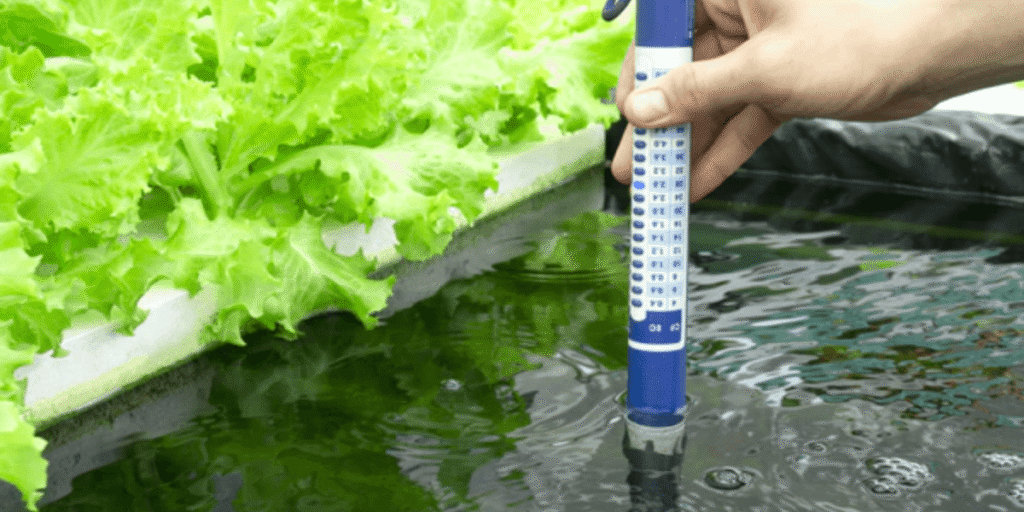
Lighting Mistakes Leading to Common Hydroponic Issues
Light is just as important for hydroponic plants as it is for soil-grown ones, and getting it right can make all the difference. If your plants aren’t getting enough light, they’ll start stretching out, becoming leggy, and looking weak and pale. It’s like they’re reaching for something they can’t quite grab. This usually happens when the light is either too far away or too dim, and no matter how perfect the nutrients are, the plants will still struggle to grow properly. On the flip side, giving them too much light can cause just as many problems. The leaves might get burned, turn yellow, or even curl, and that kind of stress can slow growth and harm the plant’s overall health.
A great way to manage this is to invest in a good-quality LED grow light and make sure it’s positioned at the right distance from your plants. It’s not something you can just set and forget. As your plants grow, you’ll need to adjust the height of the light or dim it if needed, especially if you notice the first signs of stretching or leaf burn. Different plants and different growth stages have slightly different light needs, so paying attention to what your plants are telling you is key. Once you get into the habit of adjusting the light, your plants will stay strong, healthy, and vibrant, and you’ll notice how much faster and more robust they grow. It’s one of those simple but essential things that really pays off in the long run.
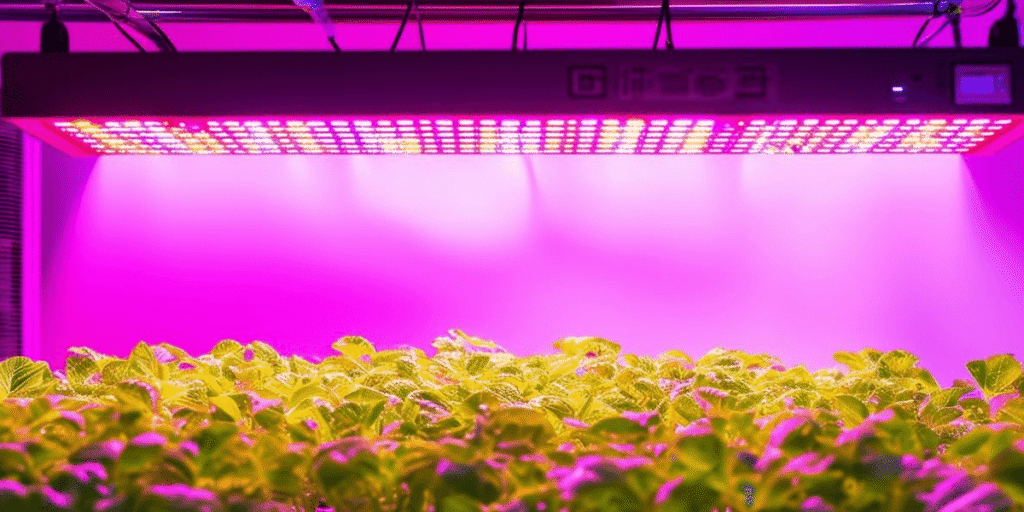
Pests and Insects in Hydroponic Gardens
Even though your plants are growing in water and not soil, pests can still find their way into your hydroponic garden. Tiny aphids or spider mites might pop up out of nowhere, munching on leaves and slowly weakening your plants. At first, it’s easy to overlook them, but if you don’t keep an eye out, they can spread fast and cause serious damage.
The key is catching them early, so make it a habit to check your plants every day. Just take a few minutes to inspect the leaves, stems, and especially the undersides of leaves, where pests love to hide. When you bring new plants into your system, quarantine them for a few days before adding them. It’s a simple step that can save you from bigger headaches later. If pests do show up, don’t stress. You can bring in beneficial insects like ladybugs or predatory mites, or use a gentle insecticidal spray that’s safe for hydroponics. By staying vigilant and taking these small steps, your plants will stay healthy and strong. Over time, you’ll find yourself dealing with way fewer infestations and a lot more thriving plants.

Airflow and Humidity Problems in Hydroponics
Even in a hydroponic garden, moving air is something that’s easy to overlook but super important. When the air around your plants stays still for too long, their stems can become weak and floppy, and moisture that lingers on the leaves can encourage mold and mildew to grow. You might not notice it at first, but over time, this can really slow down growth and make your plants look unhealthy.
One simple fix is using an oscillating fan in your grow space. You don’t need a strong gust of wind, just a gentle, steady breeze to keep the air moving. This constant airflow helps your plants develop stronger stems because they’re naturally adjusting to it almost like a little workout for them. At the same time, the moving air keeps humidity from building up around the leaves, which significantly reduces the chance of fungal problems. If you make air circulation and using a fan a regular part of your routine, you’ll see your plants growing sturdier, healthier, and more resilient. It’s one of those small changes that really pays off in making sure your hydroponic garden stays strong and thriving.
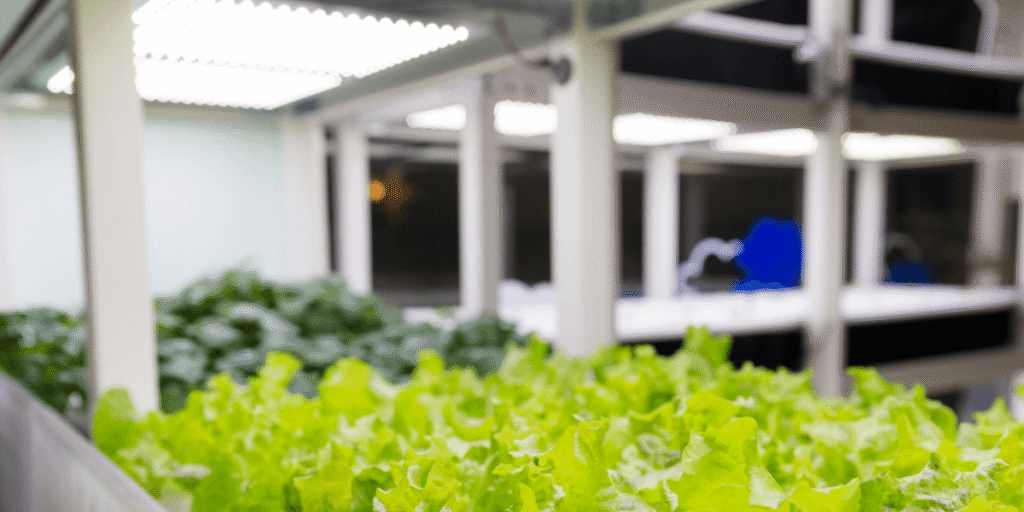
How to Diagnose Common Hydroponic Issues from Plant Symptoms
Learning to “read” your plants is the fastest way to become a better grower.
| Plant Symptom | What It Might Mean | Friendly Explanation |
|---|---|---|
| Yellow lower leaves | Nitrogen deficiency | Your plant is moving nitrogen from older leaves to new growth, so the older leaves start turning yellow. Think of it as the plant sharing its food with the new kids on the block. |
| Yellowing new leaves with green veins | Iron deficiency | This classic sign means your plant is low on iron. The new leaves can’t get enough, so they turn yellow while the veins stay green. It’s like the veins are holding onto the last bit of iron for themselves. |
| Pale or stunted growth | Lack of light or nutrients | If your plant looks weak, small, or pale, it’s probably not getting enough light or nutrients. Imagine trying to grow big without enough food or sunshine — the plant struggles just like we would. |
| Wilting plants with brown roots | Root rot or low oxygen | Brown, mushy roots are the warning sign of root rot or oxygen deficiency. The plant can’t breathe properly and starts wilting. Think of it as your plant gasping for fresh air. |
Simple Habits to Prevent Common Hydroponic Issues
The best way to deal with problems in your hydroponic garden is by preventing them before they even start. One simple way to do this is by sticking to a proactive weekly routine. Every few days, take a quick check of your pH and EC levels. It’s kind of like checking your own vital signs, just to make sure everything’s running smoothly.
Once a week, spend a little time inspecting your plants. Look at the roots for any signs of browning or sliminess and check the leaves for any unusual discoloration. Catching small issues early can save you a lot of stress later think of it as giving your plants a mini health checkup.
And every month, give your system a thorough cleaning. Drain the old nutrient solution, scrub and rinse your reservoir, and refill it with fresh solution. This keeps things running smoothly and prevents algae or other buildups from taking over. Over time, these simple habits become second nature, and your hydroponic garden will stay healthy, strong, and way easier to manage.

Conclusion: Easy Fixes for Common Hydroponic Issues
Hydroponic gardening is all about being hands-on, and the more attention you give it, the better your plants will thrive. Once you start picking up on the little signals your plants are giving you and take steps to manage your system proactively, it becomes so much easier to spot issues before they turn into big problems. Over time, you’ll get a real sense of what your plants need, and seeing them grow strong and healthy is honestly so rewarding. With a bit of patience and care, your garden will stay vibrant, your harvests will be bountiful, and you’ll find yourself enjoying every single step of the process. It’s a journey that only gets more fun as you go.
Ready to Grow Stronger Plants Without Common Hydroponic Issues?
Hydroponic gardening comes with its challenges, but once you learn how to spot the signs and troubleshoot issues quickly, the whole process becomes much more enjoyable. Paying attention to pH, nutrient balance, water quality, and airflow not only keeps problems away but also helps your plants grow stronger and healthier.
If you want to make your setup easier to manage, Greenfuturehydro offers practical tools and systems designed to save you time and effort. From pH and EC meters to efficient lighting and easy-to-maintain systems, everything is built to help your plants thrive while keeping your routine stress-free.
And if you ever get stuck, don’t worry. Our team is always here to support you. Reach out anytime at info@greenfuturehydro.com or call +86 13487543942 for friendly, personalized guidance.
For daily tips and inspiration, follow us on Instagram at @Greenfuturehydro and connect with growers around the world who are sharing their progress and passion. Together, we can troubleshoot challenges, celebrate harvests, and enjoy the simple joy of fresh, homegrown food.
Further Reading on Common Hydroponic Issues and Solutions
- How to Minimize Water-Borne Diseases in Hydroponics
- 9 Common Mistakes to Avoid in Hydroponic Gardening
- Guide to Growing Hydroponic Plants in Bulk
- From Seed to Table: “Greenfuturehydro” Hydroponic Vegetable Journey
- Hydroponic System Maintenance: Tips and Tricks
- Your Hydroponic System Maintenance Guide

